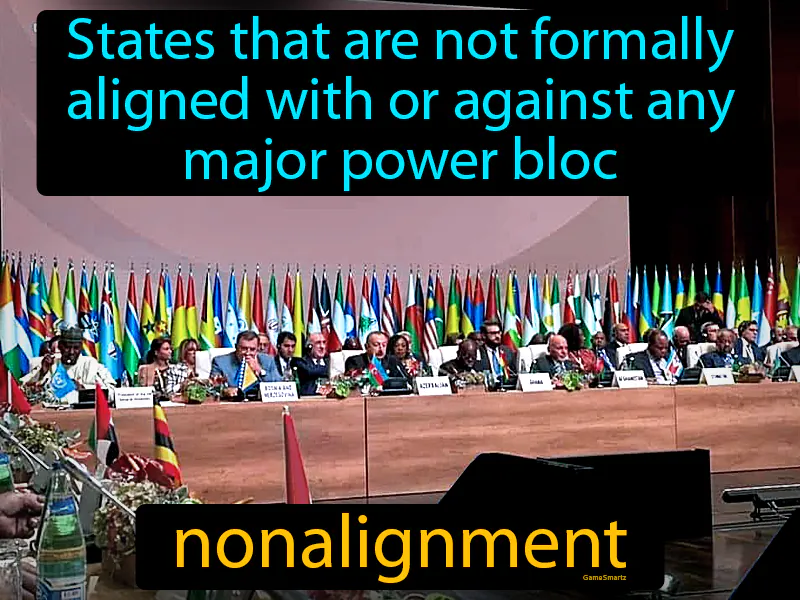Nonalignment
Nonalignment: Easy to understand
The concept of nonalignment emerged after World War II, especially during the Cold War, when newly independent countries in Asia, Africa, and Latin America sought to avoid choosing sides between the US-led Western bloc and the Soviet-led Eastern bloc. These nations wanted to maintain sovereignty and freedom in their domestic and international policies without being drawn into the ideological and military conflicts of the superpowers. Nonalignment was important because it allowed these countries to focus on development, peace, and cooperation rather than being pawns in global power struggles. Today, nonalignment still matters as countries strive to maintain independence and neutrality in a world with complex political tensions, such as those between the US and China. For instance, people may relate to nonalignment when choosing not to take sides in conflicts at school or in their communities, focusing instead on fostering peaceful and cooperative environments.

Practice Version

Nonalignment: A states that are not formally aligned with or against any major power bloc. nonalignment. Nonalignment is a policy adopted by some countries during the Cold War to avoid siding with either the United States or the Soviet Union.